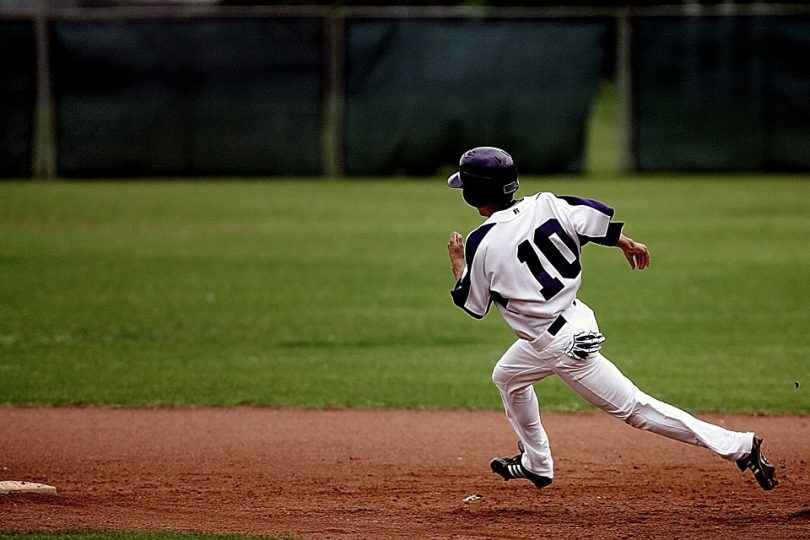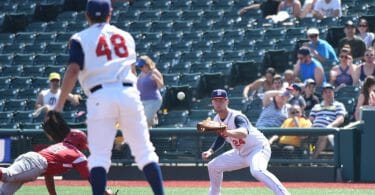Note: This situation occurred in a 2016 CWS game between Arizona and UC Santa Barbara
Situation: In a 0-0 game, the offense (Arizona) has a runner at 1st base with one out.
The Play
The hitter gets an outside fastball and hits it hard on the ground in the 4-hole between the first and second baseman, the defense is pinching closer to second base in double play depth. The runner finishes his secondary lead and reads the ball off the bat, destined for right field. He wants to get to 3rd base on the single, so he takes off running, trying to get past the batted ball before it gets to his running lane. After two steps, the runner realizes that he will not be able to get past the ball. As he tries to hop over the ball, the ball takes its first bounce on the dirt, skips up, and strikes his back foot.
The Outcome
The runner is called out and the hitter is rewarded a hit and first base. Instead of having runners at 1st and 2nd (or possibly 3rd) with 1 out, there are 2 outs and a runner at first, out of scoring position.
What Went Wrong
We often see plays like this happen. The player makes an aggressive call, but misreads either his speed, or the speed of the batted ball. If you are going to try to run in front of the ball, you need to be 100% sure that you can make it. If you know that the ball will get through the infield, it is better to wait for the ball to get past you rather than risk an out. In this situation, you would much prefer to have runners at 1st and 2nd with 1 out. While the intent of the runner (wanting to get to 3rd with 1 out) was good, he put his team in a difficult situation and in this case, squashed the potential rally. Knowing the type of runner, you are and field conditions (fast, slow, etc.) can help you avoid taking unnecessary risks like this. Luckily for the runner, Arizona held on to win the game and he was off the hook!







